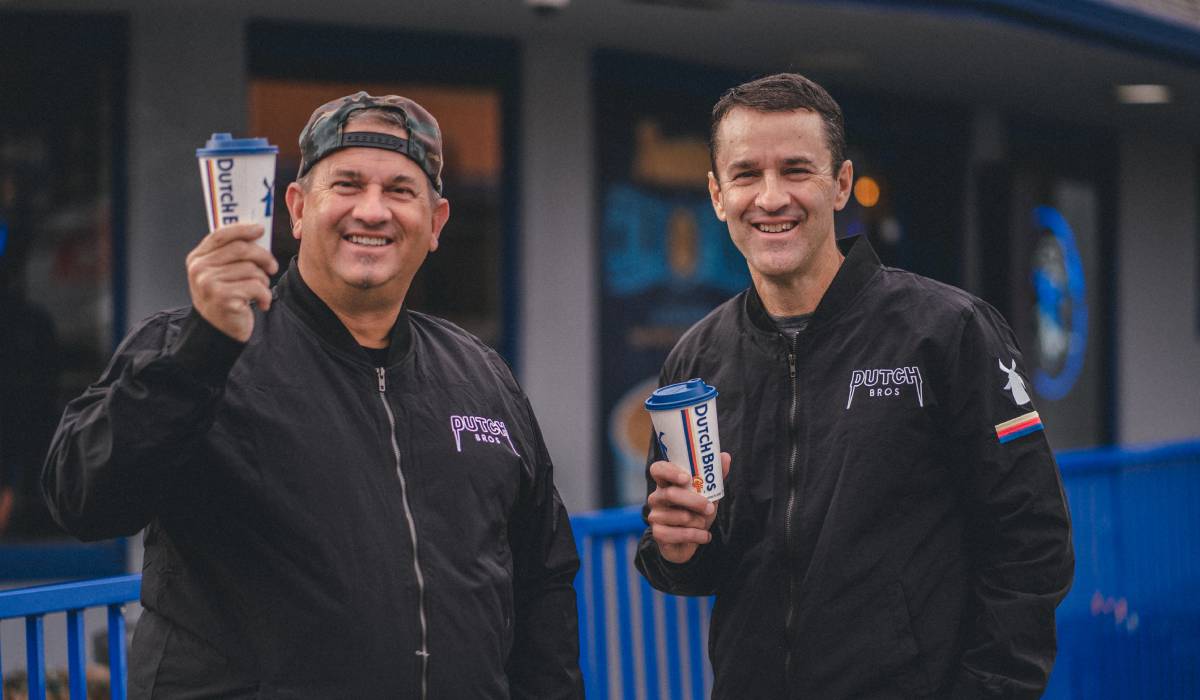Dutch Bros Coffee CEO Joth Ricci believes the chain is rather boring.
When he told analysts this, he wasn’t referring to systemwide same-store sales, which grew 10.7 percent on a two-year basis, or Dutch Rewards, a loyalty program that’s mixing 60 percent and hauled in more than 2.7 million members since launching earlier this year. He’s not talking about unit growth either, especially after the chain opened a record-breaking 33 new stores in Q3 and surpassed 500 units systemwide.
When Ricci used the term “boring,” he was conveying the fact that Dutch Bros simply doesn’t have too much to report when it comes to the not-so-great news, like rising labor and commodity costs.
“We absolutely weren’t completely immune from a staffing problem here and there,” Ricci said during the chain’s Q3 earnings call. “But we certainly did not have anything that affected the overall performance of the business that even really hit our radar that might have damaged our ability to perform. So, does that mean we didn’t have a challenge? No. Does it mean that we had a challenge that was enough to create problems? I’m not aware of anything that did that.”
Other than pay hikes from minimum wage laws in the West, the company hasn’t felt much wage inflation. CFO Charley Jemley said the brand is already paying employees well, so the company hasn’t had to intervene. Hourly employee turnover percentage is in the mid 50s, and at the management level, stores are 100 percent staffed without turnover.
“We believe our high retention rates are a product of the development opportunities, culture, and financial incentives we provide to our employees,” Ricci said. “And this industry-leading retention, in turn, produces high levels of customer service and a strong financial return. As a result of our high rate of retention, we were able to keep our shops open during the pandemic and have continued to meet consumer demand across all dayparts, while others in the industry maybe have struggled with some staffing.”
READ MORE: Dutch Bros Surges Onto Wall Street with Dreams of 4,000 Locations
Jemley called labor and commodity inflation “very mild and tempered,” with figures hovering in the low-single digits. He noted that Dutch Bros only uses 12 ingredients; that’s not to simplify inner workings of the supply chain or to dismiss efforts of employees gathering needed materials, but the truth is, the cycle isn’t as complex as others.
The CFO said dairy hasn’t seen much inflation, which is a significant component of the chain’s cost structure, and the company is forward out on coffee for a “very long period.” Also, Dutch Bros uses a three-bean blend that it can pivot around to manage costs.
Dutch Bros increased prices in early November, but hadn’t made any other significant move since before COVID. Historically, the company prices 1 to 2 percent annually. Jemley said pricing is a small piece of the chain’s comp momentum and even called it “almost not measurable.” Instead, Dutch Bros is seeing “just plain good solid traffic growth.”
“We believe that that price increase we just took will defend our margins again going into next year,” the CFO said. “And we want to just stay really focused on genuinely giving value to our customers, and we’ll just monitor it, right? We don’t have any hard and fast philosophy. It is an environment today where you got to be able to pivot quickly.”
“And that’s the approach we’d like to take,” he added. “I think we expect our margins to generally hold up. They are industry-leading. And we’re very grateful to have that, and we’ll watch this over time.”

Despite supply chain issues with building materials, equipment, and product, Dutch Bros has opened 63 stores year-to-date, including new markets in Texas and Oklahoma. Ninety-two locations are expected to open for the full year, 80 of which will be company-operated. Another 100 to 115 are projected to debut in 2022.
Starting in 2008, Dutch Bros only awarded franchises to those already in the system. In 2017, the brand stopped franchising and moved to a company-run strategy in which all operators are recruited from within the system. More than 900 are in the Dutch Bros Leadership Pathway Program and more than 200 are in the regional operator pipeline, which can support the next 750 to 1,000 company-run stores.
Of Dutch Bros’ 503 locations, 241 are corporate and 262 are franchises. Long-term, Dutch Bros believes it can reach 4,000 units over the next 10 to 15 years.
“The strength of the relationship with our employees has resulted in our ability to attract great candidates and then outstanding retention, which we believe is a real differentiator for the Dutch Bros compared to an industry that is contending with significant staffing headlands,” Ricci said.
Company-run same-store sales lifted 4.7 percent year-over-year, even with two notable headwinds. One was “abnormally low” discount promotion costs in 2020. The other was new corporate units being built near existing high-volume locations. Instead of calling this cannibalization, Dutch Bros prefers to call it “strategic sales transfer.”
Franchise comps performed better in Q3, but Jemley attributed this to geography.
“Some of the markets they’re in just have a bit more growth than some of the markets the company is anchored in,” Jemley said. “They’re great operators, but they’re not better operators than our company folks. It’s really just the dispersion by geography.”
November 10 marked Dutch Bros’ first earnings report since raising $484 million in its IPO at a share price of $23. That’s after initially projecting a range of $18 to $20. The brand opened on the stock market at $32 per share—41 percent above the IPO price.
In Q3, total revenues grew 49.8 percent to $129.8 million compared to 2020. Company-operated gross profit increased 18 percent to $22.8 million, versus $19.3 million last year. Adjusted EBITDA decreased 2.6 percent to $20.6 million, primarily due to last year’s promotional discounts.

